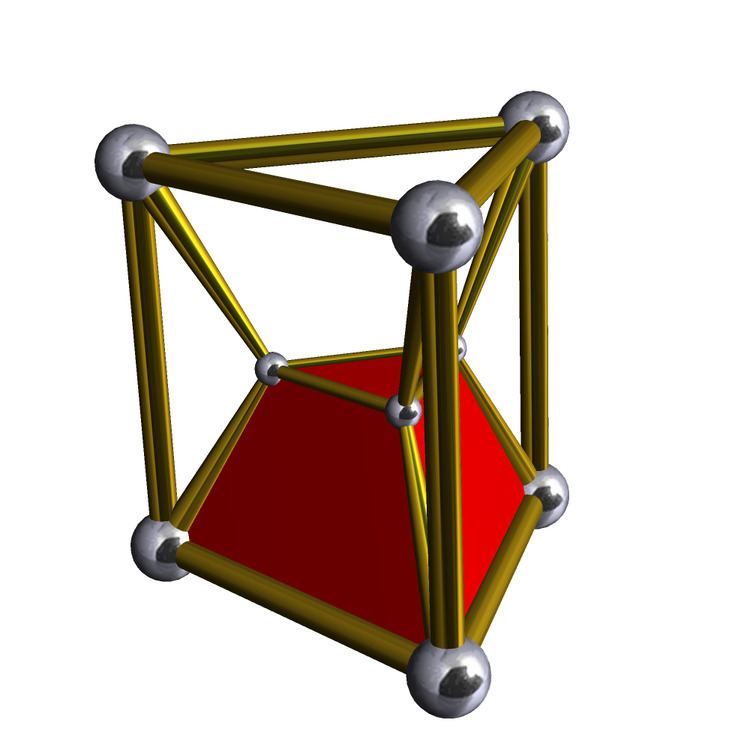 | ||
In geometry of 4 dimensions, a 3-3 duoprism, the smallest p-q duoprism, is a 4-polytope resulting from the Cartesian product of two triangles.
Contents
It has 9 vertices, 18 edges, 15 faces (9 squares, and 6 triangles), in 6 triangular prism cells. It has Coxeter diagram , and symmetry [[3,2,3]], order 72.
Symmetry
In 5-dimensions, the some uniform 5-polytopes have 3-3 duoprism vertex figures, some with unequal edge-lengths and therefore lower symmetry:
The birectified 16-cell honeycomb also has a 3-3 duoprism vertex figures. There are three constructions for the honeycomb with two lower symmetries.
Related complex polygons
The regular complex polytope 3{4}2, , in
3-3 duopyramid
The dual of a 3-3 duoprism is called a 3-3 duopyramid. It has 9 tetragonal disphenoid cells, 18 triangular faces, 15 edges, and 6 vertices.
It can be seen in orthogonal projection as a 6-gon circle of vertices, and edges connecting all pairs, just like a 5-simplex seen in projection.
orthogonal projection
Related complex polygon
The regular complex polygon 2{4}3 has 6 vertices in
